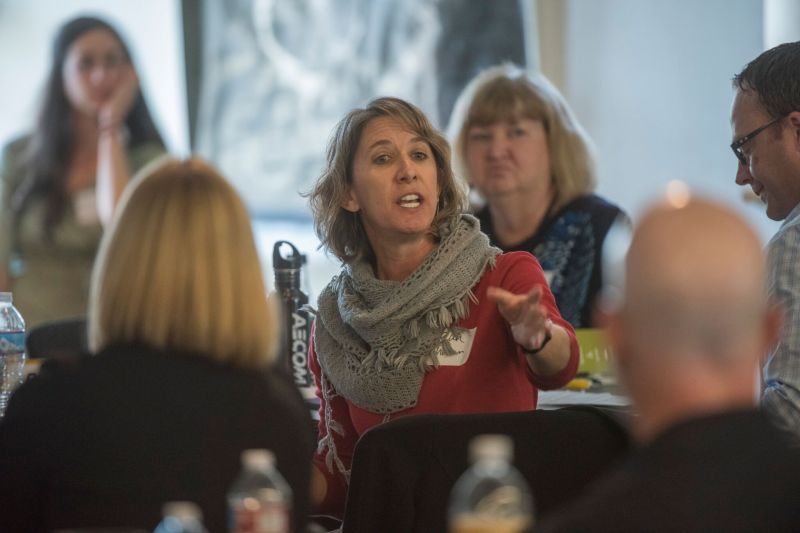Expert: Traffic Deaths Are a Public Health Crisis and Equity Issue That Demand Hancock’s Leadership

If a flesh-eating bacteria suddenly began killing Denverites, city officials would do everything in their power to stop it. It would be non-negotiable. It’s past time elected officials like Mayor Michael Hancock and City Council members, as well as city department heads, dealt seriously with an actual public health crisis: traffic deaths and serious injuries.
That’s according to Leah Shahum, director of the Vision Zero Network, a nonprofit that helps cities embark on their stated goal of ending deaths and serious injuries caused by roads built to facilitate fast driving. The Hancock administration brought her to Denver to inform its Vision Zero “action plan,” still in development more than a year after the mayor committed to the goal.
People killed while trying to walk, bike, and drive — 61 last year locally and more than 40,000 people nationwide — are victims of this system. The death toll constitutes a public health crisis, Shahum told a room full of people at the Vision Zero Summit on Wednesday. Acting on that crisis will require concrete changes, not just talk, from Hancock.
“We’ve got to see that front-end leadership, courage, and urgency from your key electeds, especially the mayor, if we’re going to have, frankly, the time and the room to invest in the changes,” Shahum told Streetsblog in an interview after the summit. “We can’t leave our individual planners and city staff and community leaders out flying in the wind to be making these tough changes on their own.”
Many of those changes will have to include retrofitting streets to slow drivers down — “road diets” that may reduce driving lanes to make room for sidewalks and bike lanes, for example. Hancock “needs to be ready for the push back, and needs to be ready when everything does not work perfectly as planned,” Shahum said.
Shahum, who has worked on Vision Zero in cities like New York, Chicago, and San Francisco, said that changes to the built environment are more important than billboards asking people to slow down, and even police enforcement. These things are tempting low-hanging fruit for politicians, but they’re complementary tools. “We can’t educate and enforce our way out of this,” Shahum said. “We can’t be printing tickets or requiring folks to slow down… if the environment is not encouraging them to change their behavior.”
Denver should also focus on transportation equity to drive change on Denver’s streets, Shahum said. It’s no coincidence that streets in Denver’s poorer neighborhoods like Sun Valley and Valverde are also some of the most dangerous streets in the city for walking, biking, and driving.
“Certain neighborhoods, certain areas, certain populations are disproportionately impacted,” Shahum said “Those neighborhoods deserve more of your limited resources. With Vision Zero, you’re able to make the argument in your city council meetings, to your mayor and with the budget, that… these districts deserve a disproportionate amount of funding and staff time.”
The city’s Vision Zero plan will account for equity, an official from the Department of Environmental Health said.
Something Hancock has yet to do? Set a timeline for achieving his stated vision of zero traffic deaths and serious injuries. This is a standard and crucial piece of any Vision Zero plan, Shahum told the crowd, though the mayor was not around to hear it. He had arrived at the summit late, made a quick speech, then left.



